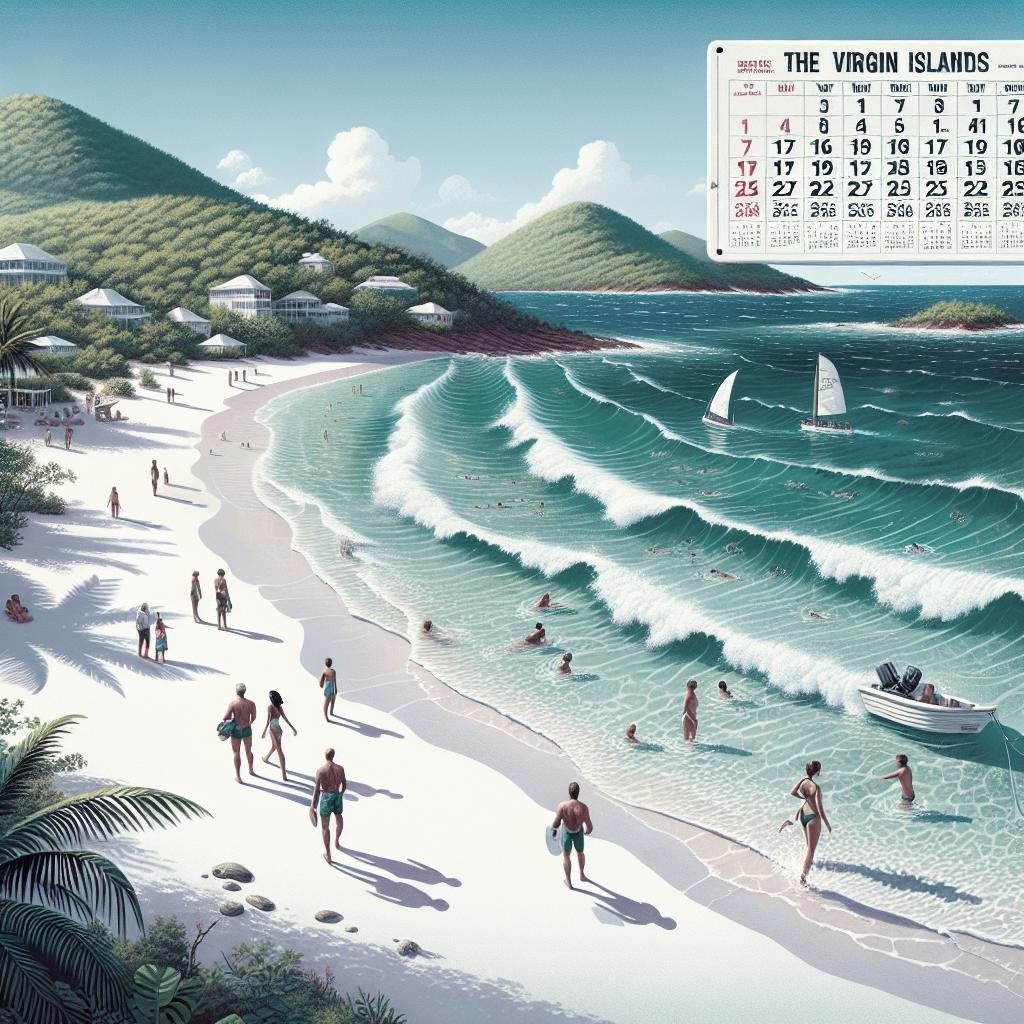Planning a trip to St. John’s, Newfoundland and Labrador? This picturesque city, with its rich history and stunning landscapes, is a destination that deserves careful consideration regarding timing. From its vibrant summer festivals to the serene winter landscapes, each season paints St. John’s in a different light. This comprehensive guide will help you understand the best time to visit St. John’s by looking at annual weather patterns, temperature ranges, rainfall, sunshine hours, sea temperatures, and humidity levels. We’ll also provide insights on securing the best prices for flights, accommodations, and car rentals, along with an overview of other noteworthy cities and places nearby.
When is the best time to go to St. John’s (Newfoundland and Labrador)?
Deciding when to visit St. John’s hinges largely on what type of experience you desire. For those who enjoy warmer weather and longer daylight hours, late spring to early fall (May to September) is ideal. During these months, you can partake in various outdoor activities like hiking, kayaking, and exploring the city’s historic sites under clear skies. Summer also hosts numerous festivals and events that make the city vibrate with energy. If you are enticed by the idea of snow-covered landscapes and winter sports, visiting between December and February can be magical. The winter months bring picturesque scenes and a quieter ambiance to the city. However, you must be prepared for cold temperatures and heavier precipitation.
Annual weather in St. John’s (Newfoundland and Labrador)
St. John’s experiences a maritime climate, characterized by relatively mild summers and cold, wet winters. The annual weather pattern shows a considerable amount of rainfall throughout the year, with peak precipitation during fall and winter months. Summer temperatures average between 10-20°C (50-68°F), providing pleasant conditions for various outdoor activities. The coldest months, January and February, can see temperatures dropping well below freezing, often hovering around -1 to -10°C (30-14°F). Snowfall is significant during these winter months, adding a charming, although chilly, blanket to the already scenic city.
Weather and climate in St. John’s (Newfoundland and Labrador)
St. John’s climate is heavily influenced by its proximity to the ocean, which moderates temperature extremes but also brings a fair share of wet weather. Summers are cool compared to mainland Canada, thanks to the onshore breezes from the Atlantic. Despite this, the season is vibrant and full of life, perfect for festivals and outdoor activities. Winters in St. John’s are characterized by substantial snowfall and persistent cold temperatures. The presence of the Labrador Current enhances the cold, often bringing icy winds to the city. Still, winter sports enthusiasts can revel in activities such as skiing and snowshoeing amidst serene winter landscapes.
Charts: temperature and rainfall in St. John’s (Newfoundland and Labrador)
Outside temperature
Average temperatures in St. John’s vary considerably by season. In the summer months, temperatures range from 10-20°C (50-68°F), making it an ideal time for tourists. Conversely, the winter months (December-February) average temperatures range from -1 to -10°C (30-14°F), which appeals to winter sport aficionados.
Precipitation (rainfall)
Rainfall is a common feature in St. John’s, with the most precipitation falling between October and February. The city averages about 1,200 mm of rainfall annually, so packing waterproof clothing is advisable regardless of when you visit.
Daily sunshine hours
St. John’s benefits from long daylight hours in the summer, with up to 16 hours of daylight at the solstice, providing ample time for sightseeing and outdoor activities. However, winter days are significantly shorter, with only about 7-8 hours of daylight, which may impact your itinerary if outdoor activities are a priority.
Sea temperature
The sea temperatures around St. John’s follow a seasonal pattern, warming up to around 12-15°C (54-59°F) in late summer months, making it more appealing for marine activities. Winter sea temperatures drop to a chilly 0-2°C (32-36°F), which is not conducive to swimming but is perfect for ice-related excursions.
Humidity
Humidity levels in St. John’s are relatively high all year round, typically between 70-85%. The highest humidity is usually in the summer months, contributing to the cool, moist maritime climate, while the winter can feel even colder due to damp air combined with low temperatures.
Canada: get the best price!
If you are planning a trip to St. John’s, securing the best prices for flights, accommodations, and car rentals is essential. Here are some tips to help you find the best deals.
Search for flights at the best price
Start by using flight comparison websites like Skyscanner or Google Flights, which aggregate prices from various airlines. Setting up price alerts can also help you nab the best deals as soon as they appear. Booking in advance, particularly during peak travel seasons, often results in better prices.
Find the best price for your hotel room
Booking.com and Hotels.com offer extensive listings that let you filter accommodations by price, rating, and amenities. Mobile app-exclusive discounts can also save you a few bucks. Always consider booking with free cancellations, providing flexibility if your plans change.
Find the best price for your car rental
Car rental comparison sites like Rentalcars.com or Kayak can help you find competitive rates. Look for promotions and discounts and consider smaller, local rental companies, which sometimes offer lower rates than bigger chains.
Search for a Flight+Hotel package to Canada
Travel package deals offered by Expedia or Travelocity can provide significant savings. Bundling flights and hotels often results in lower costs compared to booking separately, plus you get the convenience of a one-stop-shop for your entire itinerary.
Other cities and places near St. John’s (Newfoundland and Labrador)
Exploring nearby towns and cities can enrich your trip to St. John’s. For instance, the charming town of Trinity, known for its historical significance and picturesque scenery, is just a few hours drive away. With whale watching, historic sites, and hiking trails, it’s a delightful day trip or overnight stay. St. Pierre and Miquelon, a small French overseas territory, is another fascinating locale near St. John’s. Accessible by ferry or flight, this destination offers a unique blend of French culture and North American beauty. Additionally, visiting Gros Morne National Park, a UNESCO World Heritage site, should be on your bucket list. Though it requires a longer drive or an additional flight, the park’s stunning fjords, mountains, and diverse wildlife make it worth the trek.
Final thoughts
Here’s a summarized view of everything you need to consider when planning your trip to St. John’s, Newfoundland and Labrador:
| Aspect | Details |
|---|---|
| Best Time to Visit | May to September for warm weather and activities; December to February for winter landscapes and sports. |
| Annual Weather | Maritime climate with mild summers and cold, wet winters. |
| Temperature | Summer: 10-20°C (50-68°F); Winter: -1 to -10°C (30-14°F). |
| Rainfall | Heavy precipitation between October and February; annual average of 1,200 mm. |
| Daily Sunshine Hours | Summer: up to 16 hours; Winter: around 7-8 hours. |
| Sea Temperature | Summer: 12-15°C (54-59°F); Winter: 0-2°C (32-36°F). |
| Humidity | High humidity year-round, between 70-85%. |
| Best Prices | Use flight comparison sites, book hotels with free cancellation, and consider rental car comparison sites. |
| Nearby Cities | Trinity, St. Pierre & Miquelon, Gros Morne National Park. |
Keep these factors in mind, and you’re sure to have an unforgettable experience in this beautiful Atlantic gem. Whether basking in summer sunshine or exploring snowy landscapes, St. John’s has something special to offer year-round.


